
During the packaging process, few things are as crucial as ensuring your product’s food expiration dates or batch numbers are printed clearly and accurately.
In industries like food and beverage, pharmaceutical, and cosmetics, date codes on foods provide vital information to consumers and regulatory bodies. If the printer you’re using isn’t up to the task, it could lead to operational inefficiencies, poor print quality, and products that don’t meet compliance standards.
Choosing the right hot stamp printer for your packaging line is a decision that can affect everything from product quality to production speed. With so many options available, finding the right fit for your needs can be overwhelming.
Let’s walk through the key factors to consider when finding the right equipment for hot stamp printing, so you can make a cost-effective, high-performance choice that meets your current production needs and scales with future growth.
What Exactly Is a Hot Stamp Printer?
Hot stamp printers are used to print clear, durable date codes on foods, logos, batch numbers, and other essential information on a variety of packaging materials. The process involves using a heated type or die to apply ink to the surface of the packaging. It creates a clean, smudge-proof imprint that is reliable and long-lasting, even under challenging conditions.
When to Use Hot Stamp Printing:
Hot stamp printing is known for its reliability, precision, and versatility. It is commonly used in industries where clear, durable prints are essential for compliance, branding, and consumer trust.
Here’s when hot stamp printing makes the most sense for your packaging line:
- Food Expiration Dates: Keeping consumers informed about when a product is no longer safe to consume.
- Lot Codes and Batch Numbers: Tracking production batches for quality control and traceability.
- Logos and Branding: Ensuring your packaging carries your brand identity consistently.
- Tamper-Evident Seals: Providing an added layer of security and consumer trust.
The Benefits of Hot Stamp Printing:
Hot stamp printing offers a number of advantages over other printing methods, making it a top choice for packaging lines that need high-quality, long-lasting prints.
Here are some of the key benefits that make hot stamp printing an ideal solution for many applications:
- Smudge-Proof: Unlike other methods, hot stamp printing ensures that prints won’t smudge or fade, even in high-humidity or temperature-sensitive environments.
- Maintenance-Light: Hot stamp printers generally require less maintenance than inkjet printers, making them a good option for businesses that want minimal downtime.
- Ideal for Flat Surfaces and Varied Substrates: Hot stamp printing can be used on a range of surfaces, like bottles, cans, cartons, and flexible pouches, without sacrificing print quality.
What to Look for in a Hot Stamp Printer
When choosing a hot stamp printer for your packaging line, there are several important factors to consider. It’s essential to match the printer’s features with your production requirements to ensure that it meets both your current and future needs.

Production Volume and Speed Requirements
The speed at which your line operates directly affects the type of printer you’ll need. If you’re dealing with a high-output line, a faster cycle time is critical to keep up with production demands.
On the other hand, lower-volume operations might not require a high-speed model but will need a printer that offers sufficient durability.
Substrate Type and Material Compatibility
Not all hot stamp printers are created equal when it comes to substrate compatibility. Different packaging materials, such as plastic, glass, metal, or paperboard, require specific types of printers to ensure optimal print quality.
Ensure that the model you choose can handle the materials used in your packaging line, whether it’s film, foil, or carton material.
Print Area and Content Needs
The size of the print area and the type of information you need to print are key factors. For instance, if you need to print long food expiration dates or multiple lines of text, you'll need a machine capable of accommodating that.
Some printers allow for easy adjustments to imprint depth or type sets, which can be critical for achieving the clarity you need.
Integration with Existing Equipment
It’s important to choose a hot stamp printer that integrates easily with your existing equipment. Look for models that can be mounted on your existing conveyor systems or labelers, so you won’t need major modifications to your production line.
Modular systems, like the ones offered by Pack Leader USA, allow for easy integration and scalability.
Ease of Use and Maintenance
Your production team should be able to easily operate and maintain the printer without extensive training or downtime.
User-friendly controls, quick changeovers, and straightforward maintenance processes will help ensure that your hot stamp printer runs smoothly and efficiently over the long term.
What to Consider When Comparing Hot Stamp Printer Options
As you compare hot stamp printers, it’s essential to evaluate models based on your specific needs. Whether you’re hot stamp printing date codes on foods, lot codes on pharmaceuticals, or branding on beverage cans, the right printer can significantly impact your production efficiency and quality.
At Pack Leader USA, we offer two options, the Allen and ELF models, that cater to different operational requirements. Both models are designed to deliver high-quality, reliable prints, but the best choice for your packaging line will depend on factors such as production volume, available space, and speed requirements.

Ultimately, choosing the right model depends on balancing these factors with your production goals. The Allen is designed for those who need speed and volume, while the ELF model is ideal for businesses prioritizing precision, flexibility, and space efficiency.
Don’t Make These Mistakes When Selecting Your Printer
Selecting the wrong hot stamp printer can result in inefficiencies and unexpected costs. Here are a few common mistakes to avoid:
1. Overestimating Production Needs and Overspending
It’s tempting to purchase the fastest, most advanced printer, but if your production volume doesn’t demand that level of performance, you may be overpaying. Evaluate your actual needs and align your printer selection with those requirements.
2. Choosing a Printer That’s Difficult to Integrate
Make sure the printer you choose can easily integrate with your existing equipment. If it’s difficult to mount, configure, or maintain, it can lead to costly delays and lost production time.
3. Ignoring Long-Term Maintenance or Consumable Costs
While hot stamp printers tend to have lower maintenance costs than inkjet systems, don’t overlook the ongoing costs for ribbons and parts. Choose a model that’s easy to maintain and has readily available consumables to minimize downtime.
Find the Right Hot Stamp Printer for Efficiency and Quality
Choosing the right hot stamp printer is essential for ensuring smooth, reliable, and efficient printing of date codes on foods, lot numbers, and other critical information on your food packaging. By considering the right factors, you can select a printer that meets your current demands and is flexible enough to scale with your business.
Remember, aligning your equipment with your packaging needs is key to avoiding costly mistakes and ensuring that your operation runs smoothly.
Interested in learning more or comparing hot stamp printers? Contact our team today to schedule a free consultation and download the Food Manufacturer’s Guide to Food & Beverage Labeling Equipment to find the best solution for your production line.
.webp?width=200&height=114&name=2x-Packleader-logo-large%20(1).webp)

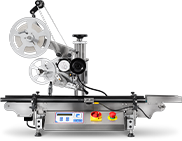
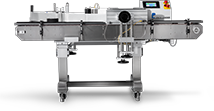
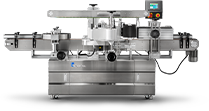
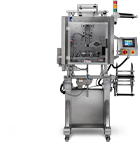
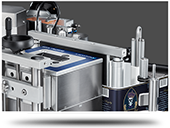
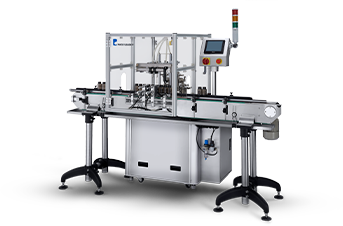

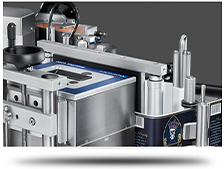





.webp?width=360&name=2x-color-logo%20(1).webp)